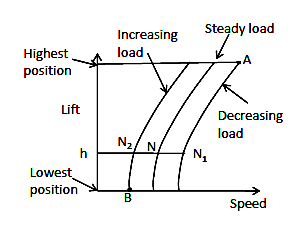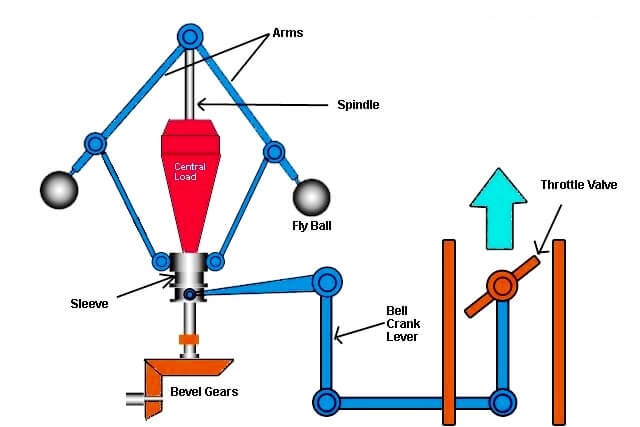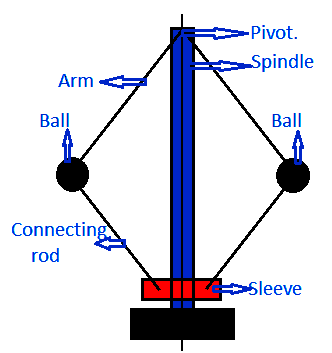Important Point
Governor Definition Engine
A governor is also the mechanical device that controls the average speed of an engine when there is a variation in load. It maintains the engine speed within specified limits regardless of load variations. It is basically a speed-controller device that is used to measure and control machine speed despite load variations.
The governor changes the configuration when the load on the engine changes and controls the fuel supply accordingly. It acts as a cruise control mechanism that drives the engine at the set speed limit of your selection, even if the load varies.
It detects changes in load and adjusts the throttle accordingly. Unlike a flywheel, it can control speed but is unable to store and supply energy when needed. It is used in most engine-driven applications such as tractors, lawnmowers, automobiles, etc.
Definition Isochronous
A governor is termed isochronous when the equilibrium speed is constant for all radii of rotation of balls within working range. For the slightest change of speed due to a change in load, such a governor would jump from one extreme position to another. Thus, an isochronous governor is oversensitive.
Also, Read: How Do Aircraft Brakes Work | How Aircraft Brakes Work | Brake Design | Aircraft Brakes
Equation of Speed
From the equation above, it can be observed that for every configuration, there are maximum and minimum limits of speed between which the speed varies without change of the configuration.
From the figure, for a given height h, the speed can vary between N 1 and N 2 without a change of the configuration.
The maximum speed at which the governor will rotate is NA when the sleeve is in the highest position and has a tendency to ascend, and the minimum speed is NB when the sleeve is at the lowest position and has a tendency to descend.
Porter Governor Working
When the engine load is reduced, the engine speed will increase suddenly, and the spindle speed will also increase. As the spindle speed increases, the two fly balls also move faster around the spindle. The centrifugal force will push balls outward, moving the ball upward.
As the ball moves upward, the arms also move upward, and the sleeve attached to the lower part of the also moves upward. The upward movement of the sleeve activates the throttle valve through a mechanism attached to the sleeve to reduce the fuel supply to the engine.
A decrease in fuel supply reduces speed. Therefore speed is maintained. In the second case, the engine speed decreases when the engine load increases. As the engine speed decreases, the spindle speed also decreases, and the centrifugal force in the balls decreases.
Therefore balls come down with arms. As the arms move down, the sleeve attached to the arm also comes down, and this activates the throttle valve, which increases the fuel supply. Due to the increase in fuel supply, engine speed also increases.
Porter Governor Construction
Porter governors have two fly balls, which are attached to the arms of the porter governors. Both these arms are taped on top of the axis.
It is powered by a spindle engine. The arms parts are attached to the central sleeve just above the fly balls. This sleeve moves up and down according to the speed of the balls.
The spindles have stoppers in place to limit the vertical movement of the axle. This sleeve is a heavy central load. The sleeve speed controls the opening and closing of the throttle valve.
Also, Read: What Is a Comparator | Types of Comparators
Frequently Asked Questions (FAQ)
Governor Definition Engine
Governor, in technology, a device that automatically maintains the rotary speed of an engine or other prime mover within reasonably close limits regardless of the load. A typical governor regulates an engine’s speed by varying the rate at which fuel is furnished to it.
Porter Governor Working
Porter Governor is a modification of Watt Governor with a central load attached to the sleeve. This load moves up and down the central spindle. The additional force increases the speed of revolution required to enable the balls to rise to any predetermined level.
Porter Governor
Porter governor is a dead-weight-loaded type of gravity-controlled centrifugal governor. It is similar to the Watt governor with slight modification. When a heavy central load is attached to the sleeve of the Watt governor, it becomes a porter governor.
Porter Governor Application
Application of the porter governor is found in the earlier steam engine to control the speed as per load by controlling the fuel flow.
Like this post? Share it with your friends!
Suggested Read –
- What Is a Comparator | Types of Comparators
- Lancashire Boiler | Lancashire Boiler Diagram | Steam Boiler Working Principle | Steam Boiler Parts and Function
- What Is Forming | Types of Forming | Forming Process in Manufacturing | Metal Forming Processes | Forming Operations
- What Is a Boiler? | Types of Boiler | Steam Boiler | How Boiler Work | Boiler Operation | Boilers Diagram | How Does a Steam Boiler Work
- What Is Sigma Comparator | Construction of Sigma Comparator | Applications of Sigma Comparator | Advantages of Sigma Comparator | Disadvantages of Sigma Comparator






Leave a Reply